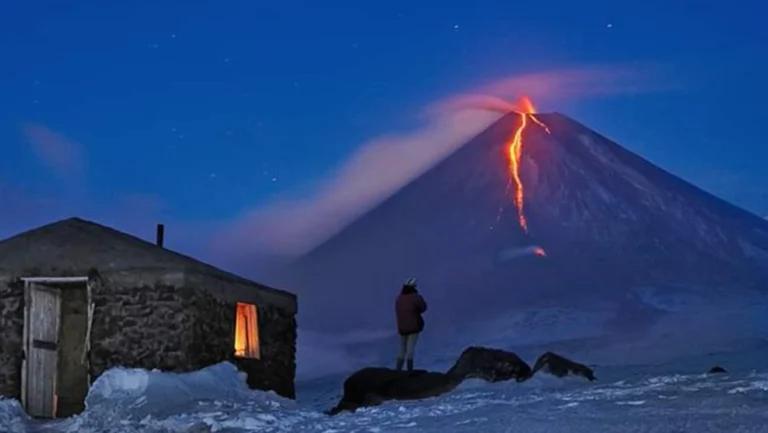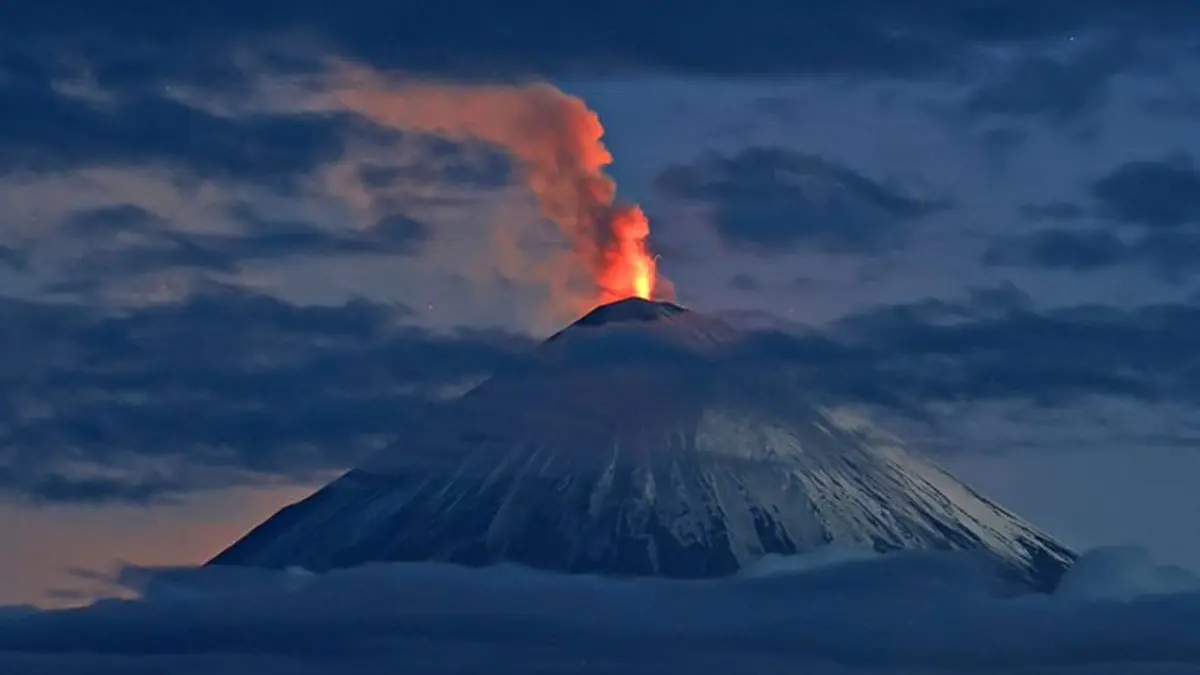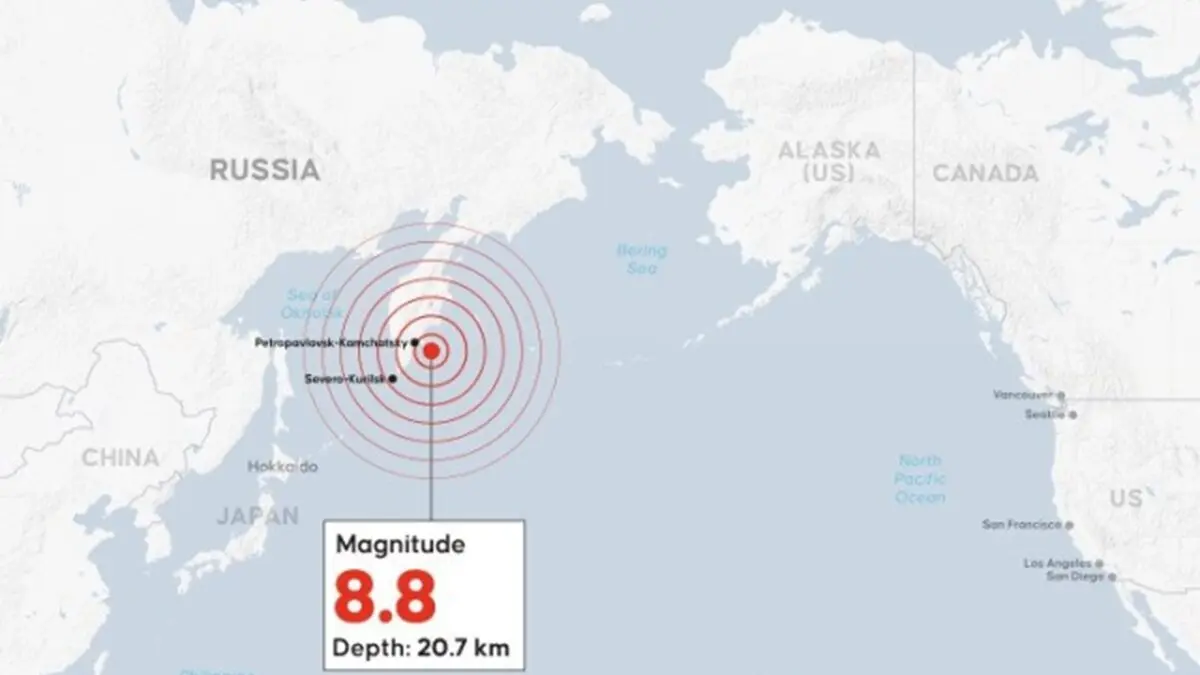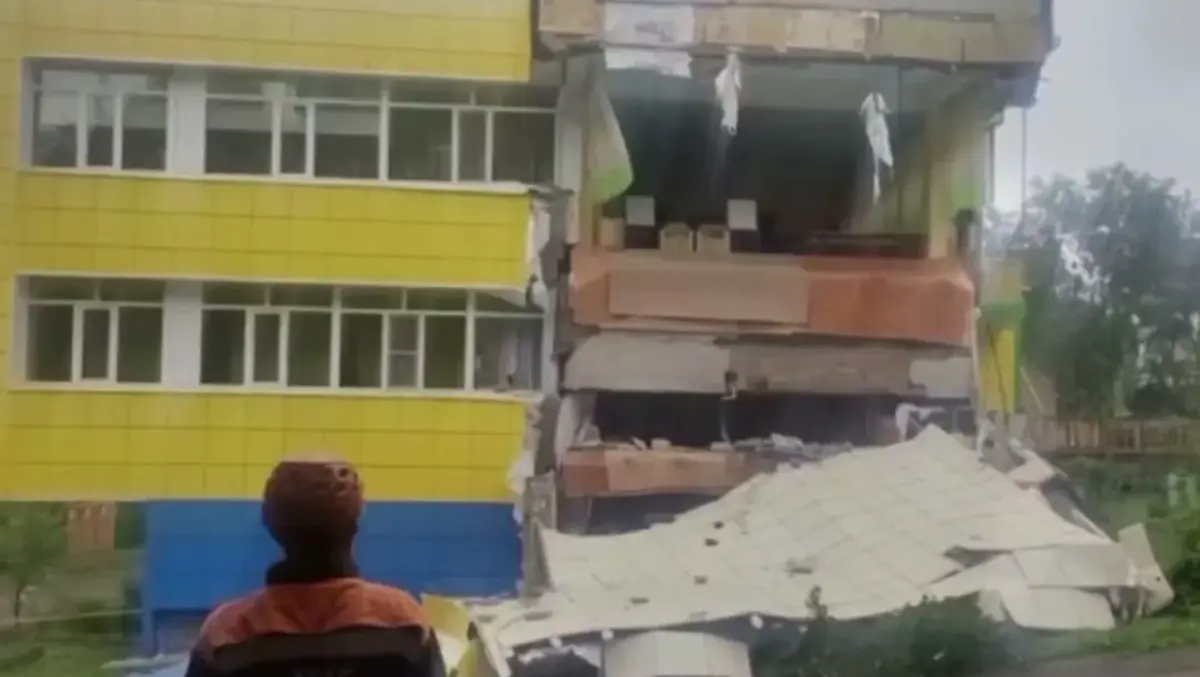Dam Destroyed Near Klyuchevskoy Volcano in Russia’s Far East

A volcano erupting on the Kamchatka Peninsula, July 2025. X/ @man_groove
August 6, 2025 Hour: 8:02 am
Lava from Klyuchevskoy volcano is currently descending toward the Bogdanovich Glacier, causing accelerated ice melt.
On Wednesday, Russian authorities confirmed that a dam has been destroyed near the Klyuchevskoy Volcano on the Kamchatka Peninsula in Russia’s Far East, raising concerns over potential mudflows and transportation disruptions in the region.
RELATED:
Klyuchevskoy Volcano Sends Ash Plume Kilometers High in Kamchatka
Fieldwork conducted from July 30 to Aug. 2 near the Studenaya River revealed that the dam — constructed in 2023 to separate the river’s right and left channels — has collapsed, allowing water to flow freely through both channels, the Institute of Volcanology and Seismology of the Far Eastern Branch of the Russian Academy of Sciences stated.
Lava from Klyuchevskoy volcano is currently descending toward the Bogdanovich Glacier, causing accelerated ice melt. The resulting surge of meltwater cascades down the slopes, generating large-scale mud and debris flows.
If these flows continue to intensify, they will cause a direct threat to tourists in the Tolbachinsky Valley. Russian scientists attribute the damage to increased volcanic activity triggered by a powerful earthquake that struck the region on July 30.
For the first time in nearly 300 years, seven volcanoes are erupting simultaneously in Russia’s Kamchatka Peninsula. The volcanic activity began after a magnitude 8.8 earthquake struck the region last week, which caused a two-meter shift in the southern part of the peninsula.
The Bezimianny, Kambalny, Karymsky, Klyuchevskoy, Krasheninnikov, Mutnovsky and Avachinsky volcanoes—none of which had been active at the same time since 1737, when another major earthquake hit the area—have now all awakened.
The case of Krasheninnikov is especially noteworthy, as it began spewing lava for the first time since 1463 and has been emitting ash plumes reaching up to 6 kilometers high in recent days. Another volcano drawing concern from scientists is Kambalny, which had been dormant for several decades.
On July 30, the peninsula was hit by the strongest earthquake in the past 70 years, which also triggered a tsunami that affected the Pacific coast of the region. Russian authorities have warned that aftershocks could continue for at least a month.
Part of the Pacific Ring of Fire, Kamchatka is home to nearly 30 active volcanoes out of a total of about 130. The area has been listed as a UNESCO World Heritage Site since 1996.
teleSUR/ JF
Sources: Xinhua – EFE






